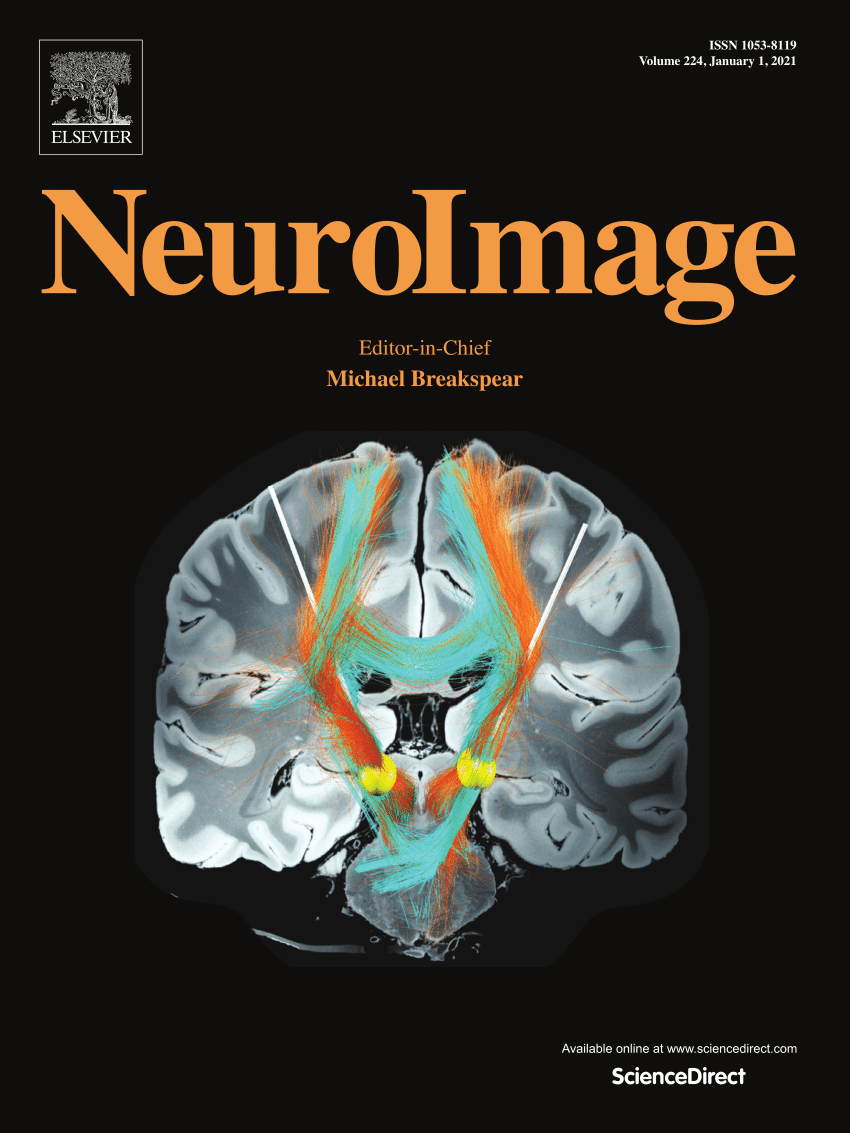通过个性化经颅电刺激的电极定位提高目标参与度:生物物理建模研究
IF 4.7
2区 医学
Q1 NEUROIMAGING
引用次数: 0
摘要
背景经颅电刺激(TES)是一种非侵入性神经调控技术,对包括阿尔茨海默病在内的多种神经系统疾病具有治疗潜力。由于解剖结构的不同,在标准位置放置刺激电极的传统 TES 蒙太奇会导致不同受试者的电场差异很大。因此,使用个人大脑成像进行生物物理建模已成为单体规划的流行方法,但可能会受到固定头皮电极位置的限制。方法我们对 10 名健康受试者进行了建模,并模拟了针对左侧角回的单体,这与恢复阿尔茨海默病受损的记忆功能有关。结果通过灵活电极定位优化的个性化蒙太奇提供了可调强度和病灶-强度权衡控制,在可实现的目标强度范围内均优于传统蒙太奇。与根据参考模型优化的蒙太奇相比,个性化优化显著降低了目标刺激强度的差异。最后,将可用电极位置从 32 个增加到约 86 个,可在目标强度和电流限制范围内显著提高目标参与度。 结论综上所述,我们提供了一个概念性硅验证,即数字设计和三维打印的 TES 盖帽具有灵活的电极定位,可提高目标参与度,对皮层目标的应用剂量进行精确和可调的控制。这对刺激大脑网络很有意义,例如具有空间上近似相关和反相关皮层节点的默认模式网络。本文章由计算机程序翻译,如有差异,请以英文原文为准。

Increasing target engagement via customized electrode positioning for personalized transcranial electrical stimulation: A biophysical modeling study
Background
Transcranial electric stimulation (TES) is a non-invasive neuromodulation technique with therapeutic potential for diverse neurological disorders including Alzheimer's disease. Conventional TES montages with stimulation electrodes in standardized positions suffer from highly varying electric fields across subjects due to variable anatomy. Biophysical modelling using individual's brain imaging has thus become popular for montage planning but may be limited by fixed scalp electrode locations.
Objective
Here, we explore the potential benefits of flexible electrode positioning with 3D-printed neurostimulator caps.
Methods
We modeled 10 healthy subjects and simulated montages targeting the left angular gyrus, which is relevant for restoring memory functions impaired by Alzheimer's disease. Using quantitative metrics and visual inspection, we benchmark montages with flexible electrode placement against well-established montage selection approaches.
Results
Personalized montages optimized with flexible electrode positioning provided tunable intensity and control over the focality-intensity trade-off, outperforming conventional montages across the range of achievable target intensities. Compared to montages optimized on a reference model, personalized optimization significantly reduced variance of the stimulation intensity in the target. Finally, increasing available electrode positions from 32 to around 86 significantly increased target engagement across a range of target intensities and current limits.
Conclusions
In summary, we provide an in silico proof-of-concept that digitally designed and 3D-printed TES caps with flexible electrode positioning can increase target engagement with precise and tunable control of applied dose to a cortical target. This is of interest for stimulation of brain networks such as the default mode network with spatially proximate correlated and anti-correlated cortical nodes.
求助全文
通过发布文献求助,成功后即可免费获取论文全文。
去求助
来源期刊

NeuroImage
医学-核医学
CiteScore
11.30
自引率
10.50%
发文量
809
审稿时长
63 days
期刊介绍:
NeuroImage, a Journal of Brain Function provides a vehicle for communicating important advances in acquiring, analyzing, and modelling neuroimaging data and in applying these techniques to the study of structure-function and brain-behavior relationships. Though the emphasis is on the macroscopic level of human brain organization, meso-and microscopic neuroimaging across all species will be considered if informative for understanding the aforementioned relationships.
 求助内容:
求助内容: 应助结果提醒方式:
应助结果提醒方式:


